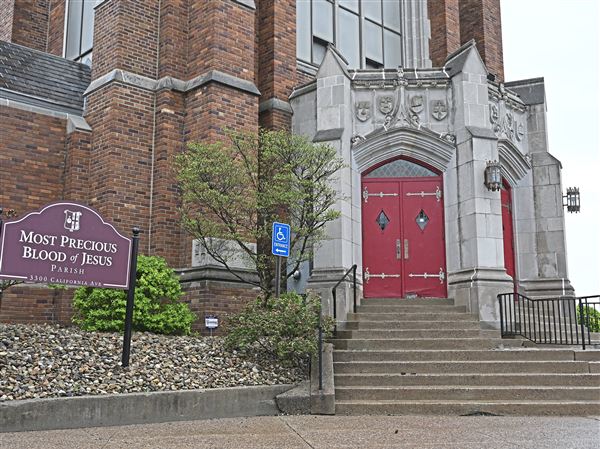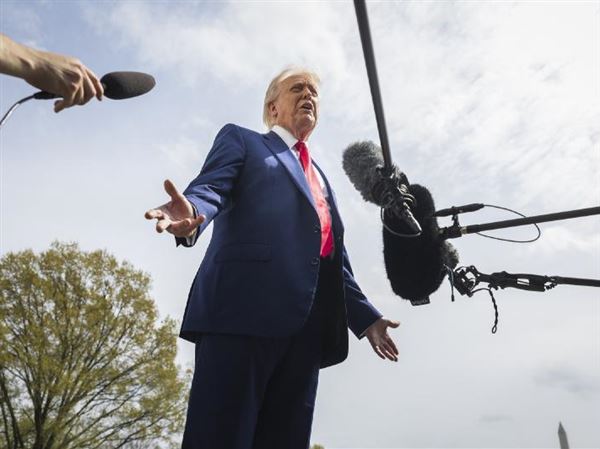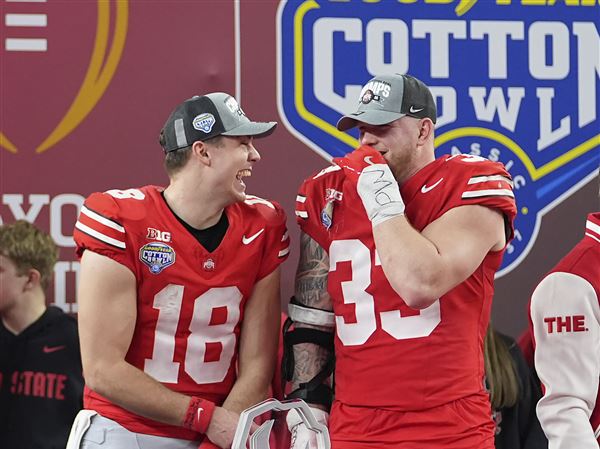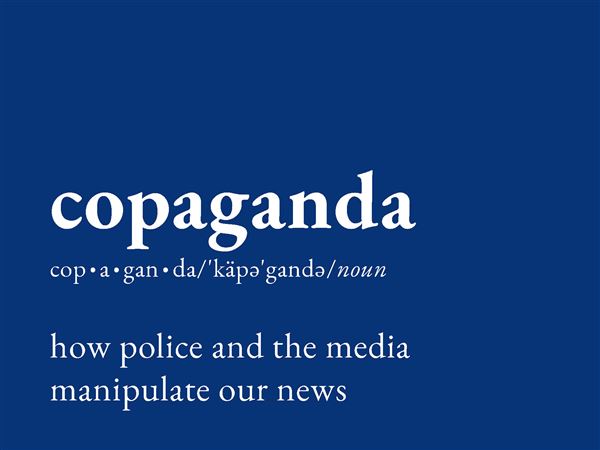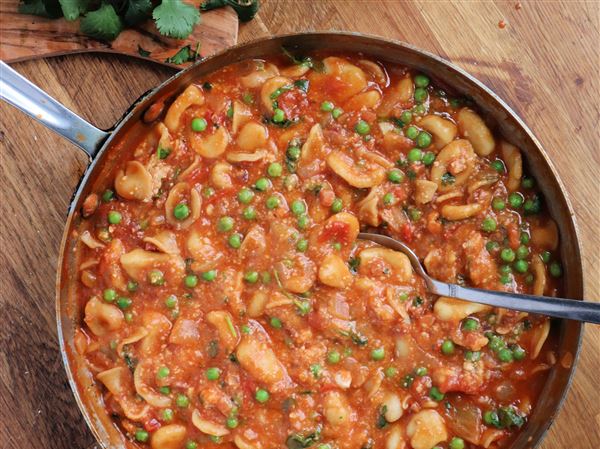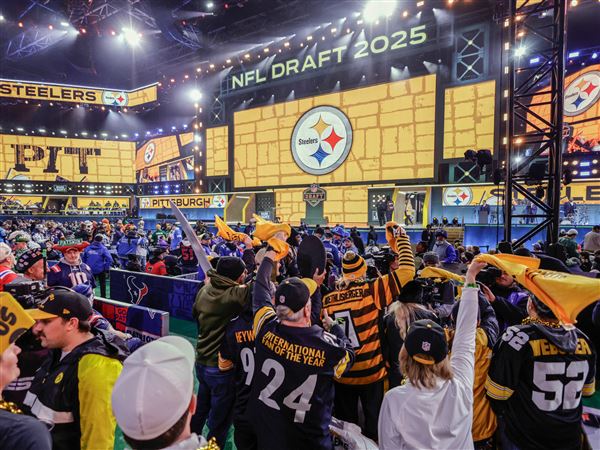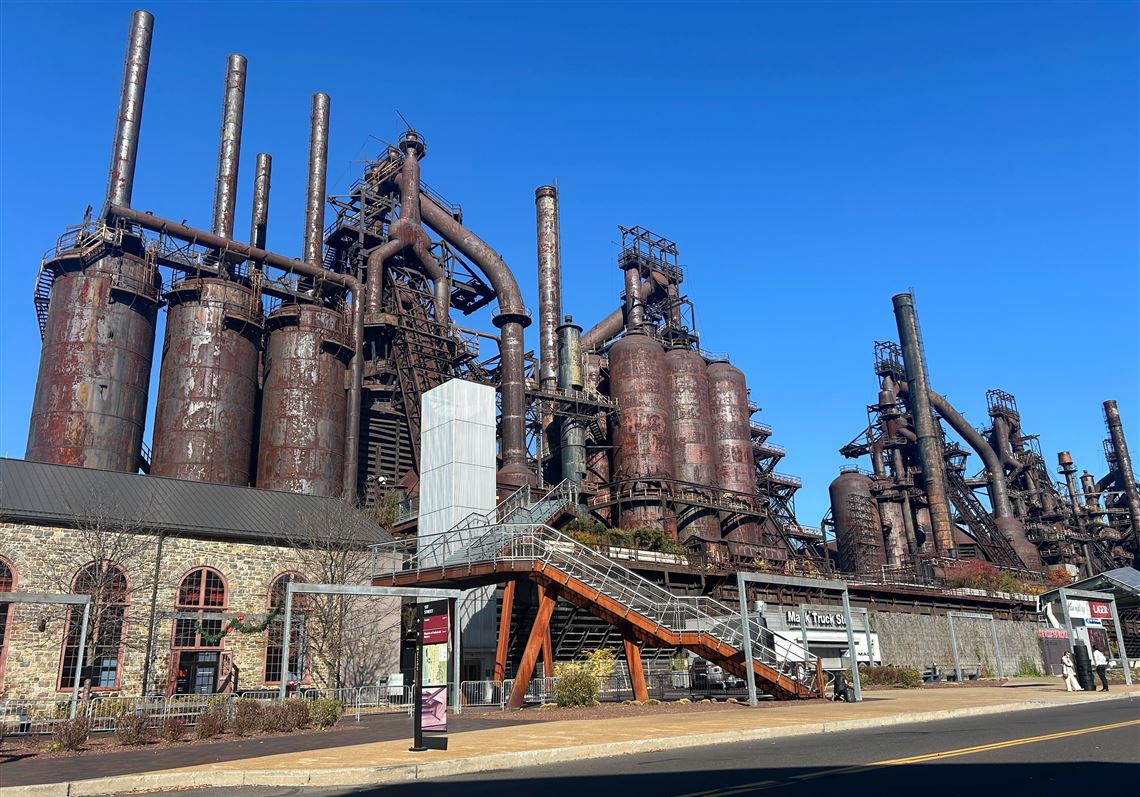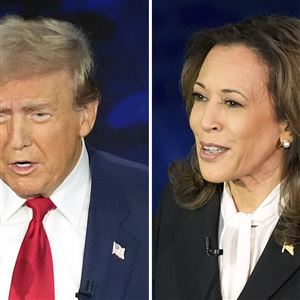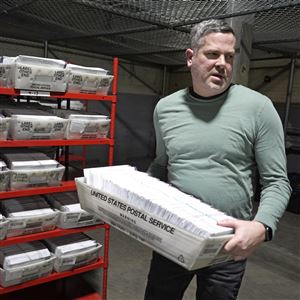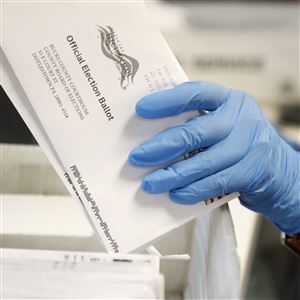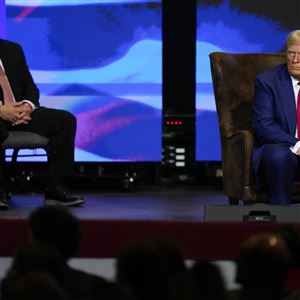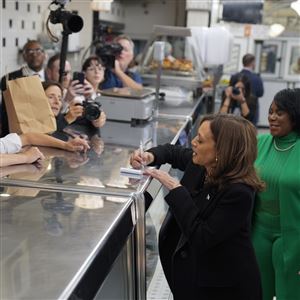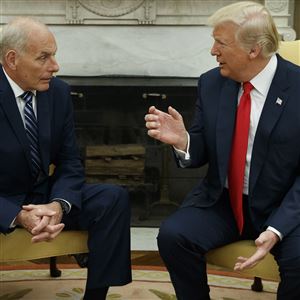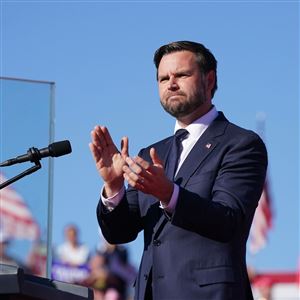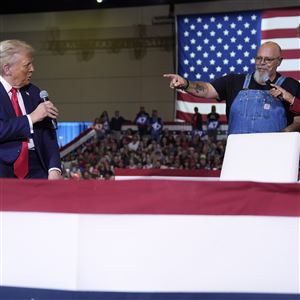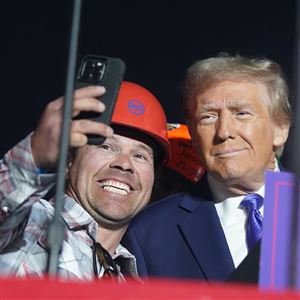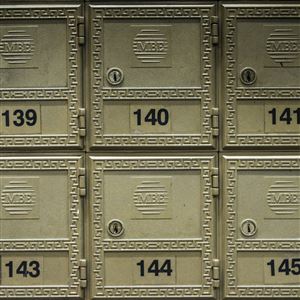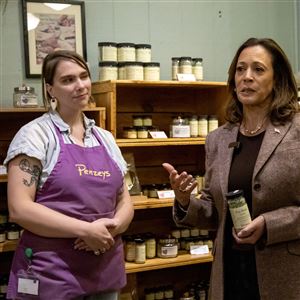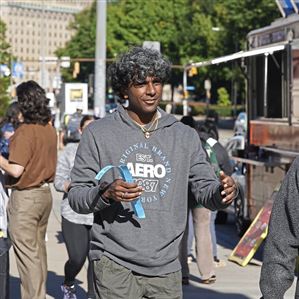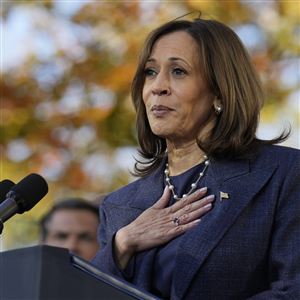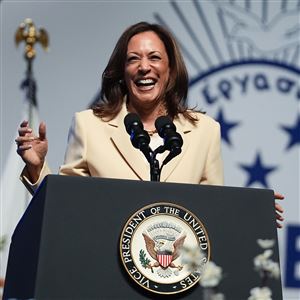BETHLEHEM — On a dead-end street full of big houses, big green lawns and big trees sporting their fall colors, one homeowner added “Harris-Walz” lawn signs to the decor. His neighbor’s property proclaims “Trump Vance.”
They get along by following one rule: Don’t talk about the election.
“We just see what’s in everybody’s yards,” said the homeowner proclaiming his support for Democratic nominee Kamala Harris, Kirth Steele, a physician. “People in this neighborhood are polite about it. They don’t want to talk about politics.”
His next-door neighbor with the sign backing Republican nominee Donald Trump, agreed on one thing: “We all agree to disagree,” the neighbor said, declining to give his name. “America is all about choice.”
Welcome to Northampton County, perhaps the swingiest county in the most populous swing state that could decide the 2024 presidential election.
Voters in the smaller of the Lehigh Valley’s two counties have backed the winning candidate in all but three presidential elections since 1920 — including flipping from Barack Obama to Donald Trump to Joe Biden. Erie County did the same thing. So did 23 others nationally, according to the Ballotpedia website that analyzes election data.
Mr. Steele, a Navy veteran, criticized Trump’s attacks on the late U.S. Sen. John McCain, R-Ariz., a former prisoner of war, and his record on women. Trump fulfilled a campaign pledge and nominated three U.S. Supreme Court justices who would go on to end the 49-year-old constitutional right to abortion and was found guilty of sexually abusing advice columnist E. Jean Carroll.
“I don’t see how any people with daughters or any woman or any veteran could vote for him,” Mr. Steele said.
Drive through other neighborhoods and the streets there also have permutations of Harris and Trump signs. So do the swales along the exit ramps, and the highway billboards that otherwise are touting businesses or products.
“What I know about my neighbors is we have some things in common but we also have some differences, and one of those differences right down the middle is our political affiliation,” said Northampton County Executive Lamont McClure, a Democrat, adding he wasn’t surprised at the side-by-side yard signs.
A bellwether
If the past is prologue, how Northampton County votes this year may determine the next president of the United States, not because of the size of its vote – it ranks 12th among Pennsylvania’s 67 counties in terms of registered voters — but its demographics.
“We don’t have enough votes in the county itself to change a statewide election, but the reason to pay attention to us is we’re a bellwether, and we’re a bellwether because our population looks so much like the rest of the population in the commonwealth of Pennsylvania,” Mr. McClure said.
In fact, Joseph Spirk, a Democratic Party official from Fountain Hill in adjacent Lehigh County, had been asked to contact John F. Kennedy’s home in Hyannis Port, Mass., after the polls closed in 1960 because his team thought if the region had supported the Democrat, he was likely to win the election.
Northampton County, a 90-minute drive north of Philadelphia, is home to the Democratic cities of Bethlehem and Easton, and expanding suburbs. To the north is farmland and the rural towns known as the slate belt because of the quarries that used to dominate the area and which tend to vote Republican. Almost 16% of the population is Latino and more than 8% is Black, according to the U.S. Census Bureau.
“The makeup of the county plays a really major role in its predictive abilities,” said Christopher Borick, a political science professor at Muhlenberg College in Lehigh County. “It does capture so much of Pennsylvania within the confines of the county borders.”
A big health care industry and several colleges — “Eds and meds,” Mr. McClure said — supply the jobs once offered by Bethlehem Steel, the iconic company that dominated the region for decades, lifted generations of families into the middle class, and produced the steel used to build the George Washington, Benjamin Franklin and Golden Gate bridges.
Warehouses have sprung up, attracted by the presence of Interstate 78 and U.S. 22 that make it easy to transport goods and provide a new source of jobs.
Lower taxes and lower housing costs have lured residents from New Jersey and New York City to town, a trend that has accelerated since many employees now can work remotely but still live just 90 minutes from Manhattan.
“Wonderfully, they’re bringing in their own sensibilities to our culture and I think it’s helping us further moderate,” Mr. McClure said. “The influx of folks from New York and New Jersey have actually helped us stay moderate. They haven’t contributed to polarization, they actually contributed to moderation.”
Of the four Pennsylvania cities with the highest percentage increase in population from 2010 to 2020, two were in Northampton County — Bethlehem and Easton — and a third was in Lehigh County — Allentown, according to U.S. Census Bureau estimates compiled by the Pennsylvania State Data Center at Penn State Harrisburg’s Institute of State and Regional Affairs. (Philadelphia was the fourth.)
“Once people start settling down, getting married and having kids, we've become a real attractive destination here,” said former Rep. Charlie Dent, a Republican who once represented the region in Congress and now is bucking his party to support Ms. Harris for president. “Things are a lot more affordable and the quality of life is high.”
A beacon of moderation
What hasn’t changed is that the region is a beacon of moderation. Voters usually don’t send fire-breathing partisans to Washington or Harrisburg but rather people willing to cross party lines. Northampton County has just 10,000 more registered Democrats than Republicans, according to the Pennsylvania Department of State.
“They expect their members to be moderate in tone and substance,” Mr. Dent said. “That type of fire-breathing, hyperpartisan rhetoric does not play well here. This isn’t one of those districts that are lopsided where a candidate can play to their base. You have got to persuade some people if you want to win.”
And members of one party are willing to support the candidate of the other party, said one of Mr. Dent’s predecessors, former Democratic Rep. Paul McHale, one of only five House Democrats to support President Bill Clinton’s impeachment.
“Their moderation allowed them to keep an open mind and even though they were registered in one political party, they could vote for someone in the other party,” Mr. McHale said. “Overall, you had a competitive balance in registered voters and you had a whole bunch of moderate Democrats and moderate Republicans.”
That’s a product of a close to 50-50 partisan split, Mr. McClure said.
“We do have differences,” Mr. McClure said. “I don't want to be portrayed as not acknowledging that we have our differences. But I do think that it’s true, that we can demonstrate that we can be the glue that holds people together.”
In addition, many of those moving in are traditional northeastern Republicans, the kind almost extinct in the rest of the country, helping to reinforce the county’s moderate heritage inherited from the Pennsylvania Dutch and the Moravian Christians who first settled the area in the 1700s.
Mr. Borick grew up in Scranton, in the Northeast Pennsylvania Irish culture that berthed politicians such as Mr. Biden and the Casey family, former Gov. Bob Casey and his son, current U.S. Sen. Bob Casey.
That’s not the culture of the Lehigh Valley, Mr. Borick said.
“It’s a place that’s produced things historically from Martin guitars to Crayola crayons to the steel that built lots of the biggest buildings and bridges in the country,” he said. “To be a building place, it’s often you work, you don’t talk as much.”
This is not to say that there are no differences — Mr. Borick said the local parties are reflecting the national partisan trends more and more — but that there is still a dominant culture of working together across party lines to get things done.
“It’s got a little more polarized,” Mr. Borick said. “The local parties have become less centrist and more aligned with the ascending parts of the parties. The Republican local party has become much more Trump-oriented. But still the underlying cultural identity, politics, is still pragmatic.”
Northampton and Lehigh counties make up the Allentown-Bethlehem-Easton Metropolitan Statistical Area, the third-largest MSA in Pennsylvania behind Philadelphia and Pittsburgh.
The Lehigh Valley is in the Philadelphia television market, but the region’s voters demand their own attention.
“It’s not suburban Philadelphia,” Mr. McHale said. “The Lehigh Valley is a unique, historically significant community.”
Campaign visits
The presidential tickets have taken note. Trump visited Schnecksville, near Allentown, in April. Democratic vice-presidential nominee Tim Walz is making a return visit to Allentown on Friday. Second gentleman Douglas Emhoff campaigned there as well last month. And before he dropped out of the race, Mr. Biden visited the region.
Bethlehem (and Allentown in Lehigh County) were two of the first stops on a week-long Pennsylvania bus tour by top surrogates for Trump.
Former U.S. Rep. Lee Zeldin, D-N.Y.; Kash Patel, former chief of staff at the Pentagon; former Treasury spokeswoman Monica Crowley; and former California Lt. Gov. Abel Maldonado headlined the Bethlehem visit, which brought about 100 Trump supporters bearing signs, flags, T-shirts and red baseball caps to a parking lot of a Bethlehem restaurant Monday.
“The American way of life is in jeopardy,” said Glenn Johnson of Bethlehem, now retired, wearing a “fight, fight, fight” T-shirt with a picture of Trump following the assassination attempt in Butler. “Everything went the wrong way for four years. We need to get back on track.”
Lori Fritz, a retired teacher from Macungie in Lehigh County, said she once held up a sign for 1984 Democratic vice-presidential nominee Geraldine Ferraro. Now she was holding up a sign for Trump.
“To me, the principles that this country were founded on are being eroded away,” she said. “Donald Trump doesn’t owe anybody. He’s not bought by anybody.”
Her support of Ms. Ferraro came “when the Democratic Party was in the center,” she said. “The party has swung too far left.”
The speakers talked about deporting unauthorized immigrants, about the economy, about crime, about national security.
And there was lots of talk about the need to go to the polls.
“I hope that if you do your job and get your friends out to vote, we will win the county,” Mr. Maldonado said.
“You’ve got to vote early,” Mr. Patel said. “You’ve got to make sure everyone you know votes early. It is voting season, not voting day any more.”
“Pennsylvania is going to decide who the next president is,” Mr. Zeldin said.
The politics of Northampton County mean that voters will be motivated by proposals to help them, not attacks on the other side, Mr. McHale said.
“No undecided voter, particularly no undecided Democratic voter, is going to be moved by an attack on Donald Trump’s character,” he said. “Those voters want to hear a believable platform describing how the election of Democrats will provide a better quality of life.”
Mr. McHale, who is supporting Ms. Harris, said her proposals are doing that. Ms. Harris has proposed a middle-class tax cut, help with making a downpayment on a house, increasing the Child Tax Credit, and increasing the tax credit to start a small business.
“In these closing days, the focus should be on bread and butter economics issues,” said Mr. McHale. “Harris is doing some of that. She’s doing so much better in that regard but I would double down on it. It’s almost reflexive muscle memory to default to an attack on Donald Trump’s character. He’s deserved it. It is easy and I think counterproductive.”
Running the election
The attention being focused on Northampton County will continue after Election Day as the votes are counted. Because of an expansion of absentee balloting, Mr. McClure said there are really two elections being run – the mail-in ballots and those cast on Election Day.
“I have just about every department one way or another in this county working on elections,” he said.
This is the state where Trump, his allies and a majority of House Republicans tried to throw out Pennsylvania’s state-certified election results four years ago, and the former president already has refused in advance to accept the outcome this year.
“The problem is that there are unfortunately elements, especially in the MAGA movement, that want to discredit our electoral process,” he said. “Any kind of mistake or glitch gets magnified by MAGA.”
And mistakes do happen, but not large enough to render the entire election invalid, he said.
“Elections are human endeavors. Humans aren’t perfect. Neither are elections,” Mr. McClure said.
“What’s really important is when you have a problem in an election, you immediately identify it, you go out in front of the public, you explain to public what the problem was, you explain to the public what the fix is and you ultimately explain to the public why it wasn’t material to the bottom line of the election and why they can be confident they had a legal, fair and accurate election.”
That also fits in with the county’s culture, Mr. McClure said.
“I think that we can serve as an exemplar of how to disagree politically but not be disagreeable,” he said. “It’s important when you win an election to be gracious and when you lose an election to acknowledge it.”
First Published: October 24, 2024, 9:30 a.m.
Updated: October 25, 2024, 9:54 a.m.
